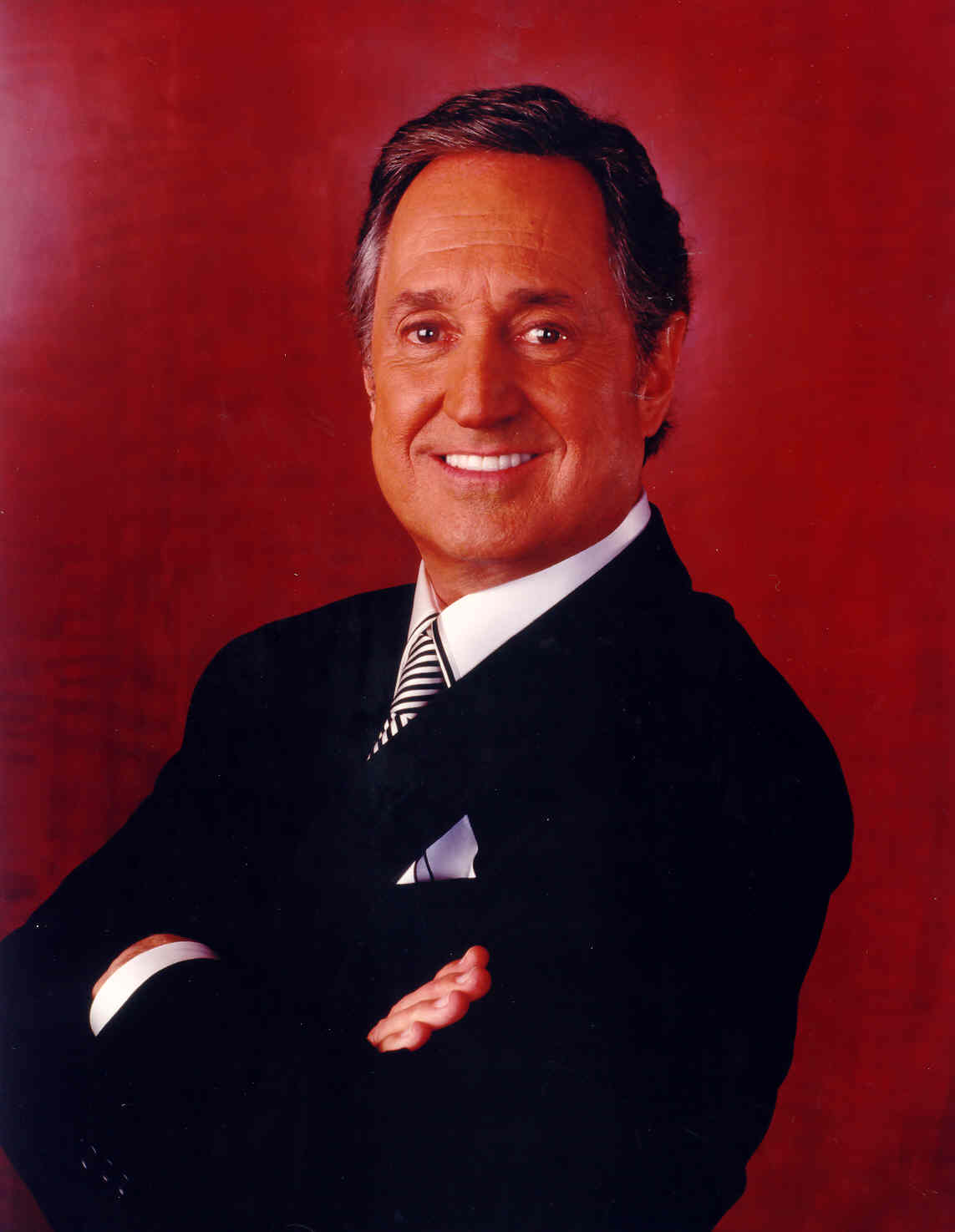|
|
Biography |

 (click photos to enlarge) |
|
|
Biography
It is hard to imagine the history of rock and roll without the many contributions of Neil Sedaka. For over four decades, Sedaka’s timeless standards have helped change the face of popular music. With countless hit singles, and platinum and gold records, he is recognized as one of rock and pop music’s legendary pioneers, and remains as vital a force today as he was when he first achieved his string of hits back in the late 1950’s. But Neil’s meteoric rise to success began even before that.
It was classical music that shaped the musicianship of the young Neil Sedaka. At the age of eight, he had already begun his intensive classical piano training at the prestigious Juilliard School of Music, practicing up to five hours a day. And by the time Sedaka was sixteen, Artur Rubinstein voted him one of the finest classical pianists in New York City high schools. Classical music has always remained a passion for Sedaka, and though he once considered earning a doctorate in the field, it was not where he chose to forge his legend.
Since his classmates were listening to pop and rock and roll playing on the radio, and being eager to gain the acceptance of his peers, Sedaka began to play the latest music at parties. He formed a doo-wop group in high school, the Tokens, and they recorded two singles that became regional hits. Greater success was soon to follow, when after having been introduced to a young neighbor, Howard Greenfield, by Greenfield’s mother, they began a successful songwriting partnership. As Sedaka has noted, “for a long period of time, we wrote a song a day.” While some songs never made it out of the house, many others made their way around the world. In the four years between 1959 and 1963, the songwriting team sold over twenty-five million records and their collaboration was to last for thirty years, one of the longest partnerships in music history.
Sedaka and Greenfield became one of the original creators of the “Brill Building Sound”in the late fifties and early sixties when they were the first to sign with Don Kirshner and Al Nevins at Aldon Music. Not long after, Kirshner and Nevins signed songwriters Neil Diamond, Carole King, and Paul Simon, among others, and they became the center of the pop music world. They worked in a competitive but communal environment, producing the innocent, romantic anthems of the era that would dominate the music charts. It was in 1958, at the age of eighteen, when Sedaka was catapulted into stardom after Connie Francis recorded his “Stupid Cupid.” She then sang the theme song Neil and Howie had written for the 1960 MGM spring break classic, “Where the Boys Are,” which would be her biggest hit. Rhythm and blues stars Clyde McPhatter and LaVern Baker also scored hits with his songs. As a result of these hits, Sedaka was able to sign a contract with RCA as a writer and performer of his own material. Sedaka soon recorded chart toppers “The Diary,” “Oh, Carol,” “ Stairway to Heaven,” “Calendar Girl,” “Little Devil,” “Happy Birthday Sweet Sixteen,” “Next Door To An Angel,” and “Breaking Up Is Hard To Do,” songs that have become a part of peoples’ lives and can instantly take listeners back to special moments. Sedaka had become a “teen idol” and flew around the world as one of the (Revised 2004) youngest performers to tour extensively. He studied the styles of music that had reached the top of the charts in other countries, and innovatively combined these styles with classical and pop music. His music became distinguished for a unique recording style involving multi-tracking his own voice to achieve a rich sound. But all of this was merely the first act in a career that has not ceased to evolve and entertain.
Following the “British Invasion” by the Beatles and the Rolling Stones in the United States, when the music scene began to change and his record sales dwindled, Sedaka continued to develop his gift for songwriting. He wrote for other performers such as Tom Jones with “Puppet Man,” The Fifth Dimension with “Workin’ on a Groovy Thing,” and the Monkees with “When Love Comes Knocking At Your Door.” Sedaka also achieved success in international markets by recording albums in Spanish, German, Italian, and Japanese, with songs and instrumentation native to each country. Then in 1972, Sedaka re-launched his solo career in England by releasing the album Emergence. A good friend, Elton John, offered to sign Sedaka to his Rocket Record label and re-introduce him to American audiences. The two albums he recorded for the Rocket label, Sedaka’s Back in 1974 and The Hungry Years in 1975, both became top selling albums around the world. His comeback was further heralded by two of his songs co-written with Phil Cody, “Bad Blood” and the timeless “Laughter in the Rain,” reaching the #1 position on the music charts. In Rolling Stone Magazine, Sedaka was hailed as “the new phenomenon.” The song “Breaking Up Is Hard To Do” was re-released as a ballad in 1975, and made music history when it reached #1 on the charts, becoming the first song recorded in two different versions by the same artist to reach the Top Ten. During this time, Sedaka also helped to launch the career of the Captain and Tennille with their version of his “Love Will Keep Us Together,” which won a Grammy Award for Record of the Year for this worldwide, number one hit. Elvis Presley and Frank Sinatra would also perform their own versions of Sedaka hit songs from the 1970’s.
In 1976, Sedaka was seen by millions when his television special, Neil Sedaka: Steppin’ Out, was shown on NBC, with a guest appearance by Bette Midler. Two more songs of Sedaka’s, “Solitaire” and “Hungry Years,” became top hits, helping to cement his reputation as a songwriting force. In 1980, Sedaka had a Top Ten hit with “Should’ve Never Let You Go,” which he recorded with his daughter, Dara; this remains one of the few father-daughter songs to have ever made the charts. The Sedaka legacy does not end there. His release in the 1990’s, Timeless – The Very Best of Neil Sedaka, which includes both old and new songs, sold over 500,000 copies and earned Sedaka yet another Platinum Album.
As the prolific and versatile author of more than 1,000 songs, the accolades showered on Neil Sedaka have been numerous. Among the honors he has received, Sedaka has been inducted into the Songwriter’s Hall of Fame, has had a street named after him in his hometown of Brooklyn, and was given a star on the Hollywood Walk of Fame. Sedaka was honored in 1998 as one of a select group of personalities to be enshrined at the Madame Tussaud Wax Museum in Las Vegas. He has received numerous awards from BMI, an organization that monitors the music industry, for having written some of the most played songs on radio or television. Recently, his song “Breaking Up Is Hard To Do” was listed by BMI as one of the fifty most performed songs of the 20th century. Yet these serve as perfunctory recognition to a body of work that continues to grow and never ceases to entertain.
Live performances have always been a hallmark of the Sedaka career and have taken him to some of the most hallowed and respected concert stages around the world. London’s Royal Albert Hall has always been a favorite and his appeal in England has only grown over the years. His concerts, often with a full orchestra, continue to be enormous draws in Las Vegas, Reno, and Atlantic City, and Sedaka still enjoys the interaction with an audience.
Sedaka has been married for forty one years to his wife, Leba, and they have two children: daughter Dara is a recording artist and vocalist for television and radio commercials, and son Marc is a successful screenwriter in Los Angeles. He and his wife, Samantha, made Neil a grandfather for the first time in January with the birth of twins, Amanda and Charlotte.
Sedaka has embarked on a marriage of an entirely different sort by returning to the classical roots of his early years. With original romantic lyrics written by Sedaka, and set to the music of Beethoven, Chopin, Rachmaninoff, and Tchaikovsky, he has released a collection of these songs on Classically Sedaka. He has already performed a selection of these songs with many symphonies across the United States and the United Kingdom, including the Richmond Symphony, the Jacksonville Symphony, the National Symphony Orchestra at the Kennedy Center, and the New York Pops at Carnegie Hall. Both the critical and audience response have been phenomenal. Classically Sedaka has gone on to earn a gold record in Europe. Following the smash success of this record, Sedaka released Tuneweaver, and made another departure with the release of Tales of Love and Other Passions, recording both old standards and original Sedaka songs with a jazz trio, which includes the renowned jazz piano player, Andy LaVerne. Judging by these CD’s equally strong sales, it is clear that Sedaka’s worldwide appeal and ever-increasing fan base show no signs of slowing down.
With a career spanning five decades, a rare feat in the entertainment world, Sedaka never ceases to amaze. He has written a new collection of songs for the recent release, The Show Goes On. Neil has been working on numerous other projects, everything from a CD with demos from the beginning of his career to an 8-CD box set from Bear Family Records. Several reissues of his recordings are released every year in America and abroad. And as in the past, when singers as diverse as Patsy Cline, Rosemary Clooney, Abba, and Cher recorded Sedaka songs, contemporary performers such as Gloria Estefan and Sheryl Crow continue to record his music. Sedaka also continues to appear in television specials about his music. He has been the focus of the program“Words and Music” for CPTV/PBS and “The Voice” for Channel 4 (UK) and Bravo. In November 2002, an hour long program on Neil Sedaka for A & E’s acclaimed Biography series was broadcast. On April 29 last year, Neil won over a whole new generation of fans when he appeared as a guest judge on the Fox Network’s American Idol. The response from viewers from as young as pre-teens and teenagers to fans who go back with Neil when he was a Teen Idol has been phenomenal. Last August, Neil appeared on NBC’s Today Show , and the new, romantic song he performed on the program, “You,” from The Show Goes On was well received and created a tremendous demand for the song, especially for weddings and anniversary celebrations. In 2004, “Love Will Keep Us Together” was performed by Brigette Romanek in a scene in the hit movie, Starsky & Hutch and on the film’s soundtrack; Clay Aiken’s single with “Solitaire” reached #4 on Billboard’s Hot 100 chart and has remained in the Top Ten on the Singles Sales chart for twenty three straight weeks; Neil was back at Carnegie Hall on June 3; and he received the Sammy Cahn Lifetime Achievement Award at the Songwriters Hall of Fame on June 10 for outstanding achievement in promoting songwriters, and the ceremony aired on the Bravo Channel on July 18. Sedaka has written an autobiography entitled Laughter in the Rain: My Own Story for Putnam Books. He has performed on behalf of the American Cancer Society and the Alzheimer Association, among many other charities. All of these ventures will no doubt add to his legend – that of a consummate musician, an extraordinary vocalist, and an ageless songwriting talent.
|
|
